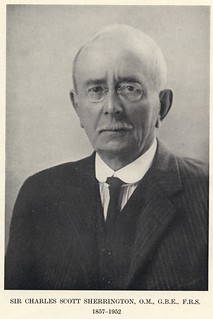- Correspondence Details
-
Sent From (Definite): John Newport Langley - Cambridge
Sent To (Definite): Sir Charles Scott Sherrington - OxfordDate: 8 May 1922 - Current Holder(s)
-
Has received letter. Expects the Magitol and the specimens to arrive by next post. Occurs to him that Sherrington must have kept specimens. Refers to Sherrington's 1894 article in Journal of Physiology on the anatomical constitution of skeletal muscles. Discusses Weigert method as being better than omnic acid method for the spinal cord. has obtained copy of phagocyte film from Paris.
- No links match your filters. Clear Filters
-
Sent from
 John Newport Langley
John Newport Langley
8 May 1922
Cambridge
Description:'I have obtained the cinema 'phagocyte' film from Paris, & propose to have it shown on the 20th at the theatre. It is amazingly good. You no doubt saw it in Paris. I hope you will be able to come & we shall be delighted if you will stay the week end with us.'
-
Sent to
 Sir Charles Scott Sherrington
Sir Charles Scott Sherrington
8 May 1922
Oxford
Description:'I have obtained the cinema 'phagocyte' film from Paris, & propose to have it shown on the 20th at the theatre. It is amazingly good. You no doubt saw it in Paris. I hope you will be able to come & we shall be delighted if you will stay the week end with us.'
-
Cites
 C.S. Sherrington, 'On the Anatomical Constitution of Nerves of Skeletal Muscles; with Remarks on Recurrent Fibres in the Ventral Spinal Nerve-root', Journal of Physiology 17 (3-4) (1894), pp. 210-258.
C.S. Sherrington, 'On the Anatomical Constitution of Nerves of Skeletal Muscles; with Remarks on Recurrent Fibres in the Ventral Spinal Nerve-root', Journal of Physiology 17 (3-4) (1894), pp. 210-258.
Description:'I have just received your letter. 'Mayitol' & the specimens will no doubt come in the next post. But I am writing at once since it occurs to me you may have kept specimens or nerves of your two sets of 1894 in which you received the lower lumbar ganglia omitting the posterior roots (Journal, 17, p. 223). I fear neither nerves nor specimens can have lasted till now, but if they have I should like to look at them. The point is a detail of no particular importance, but I am a little doubtful whether all the postganglionic fibres lose their myelin in the cat soon after joining the spinal nerves.'







